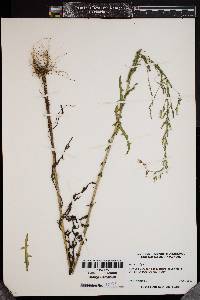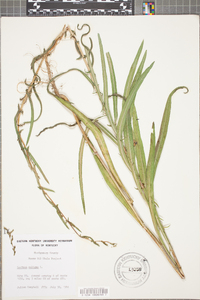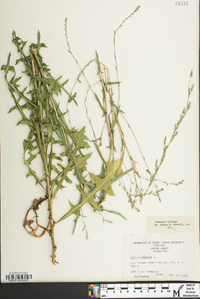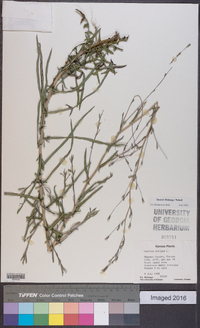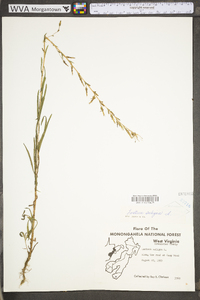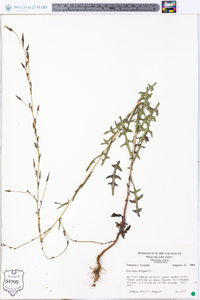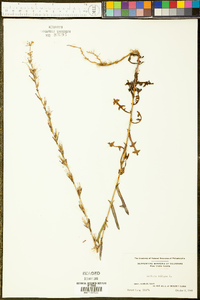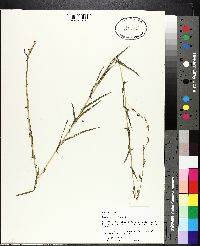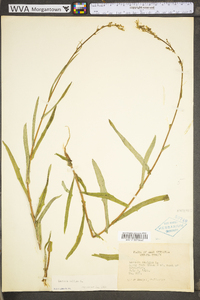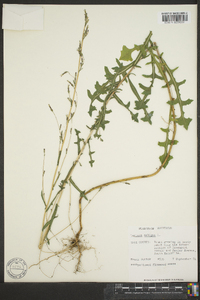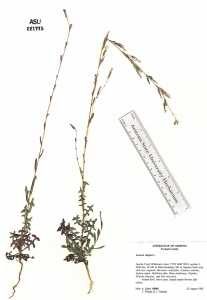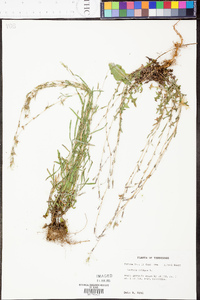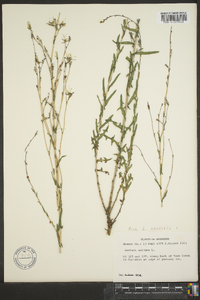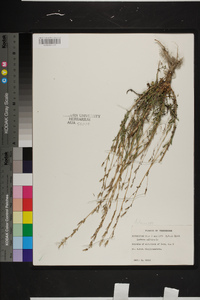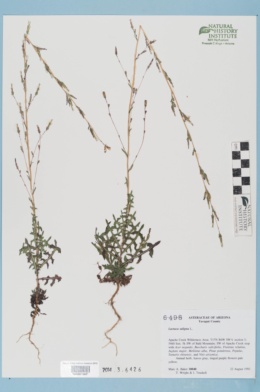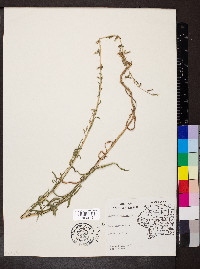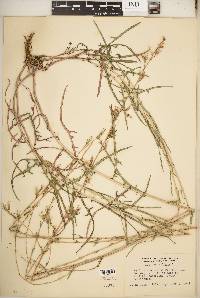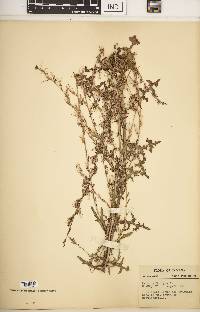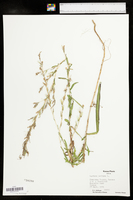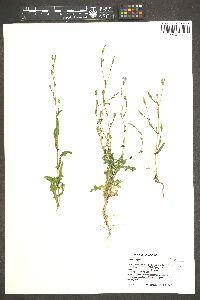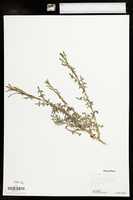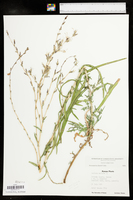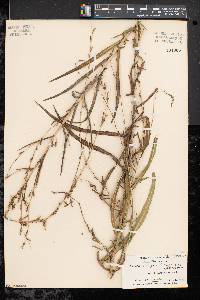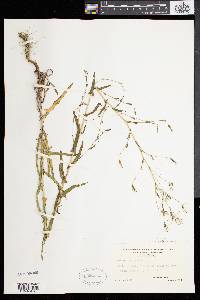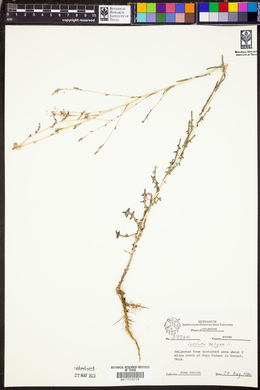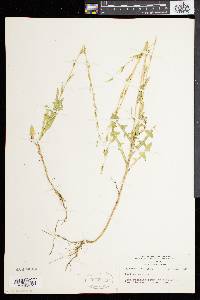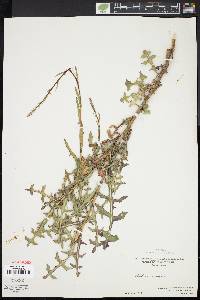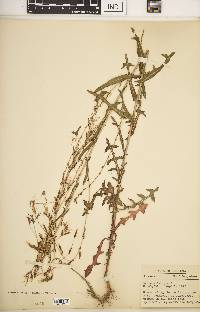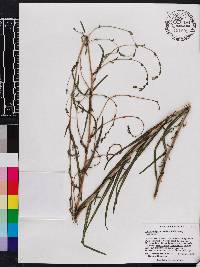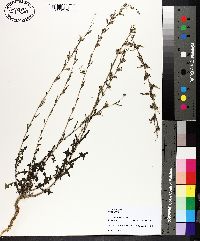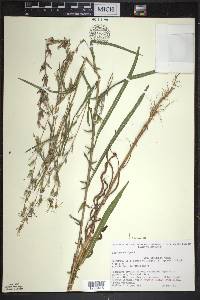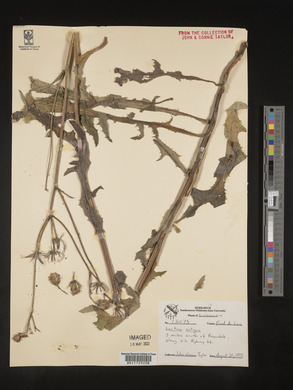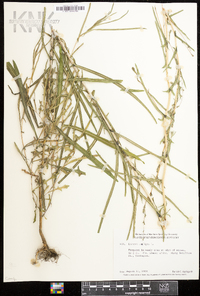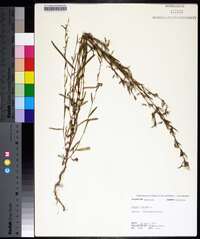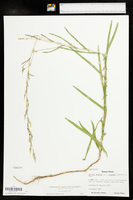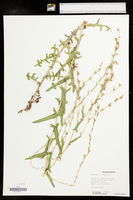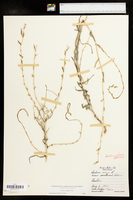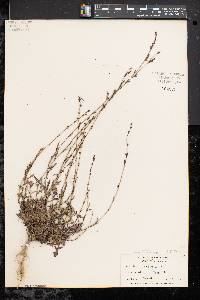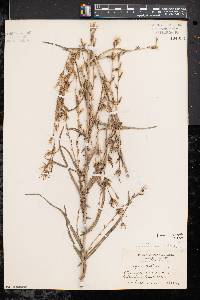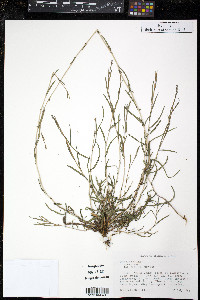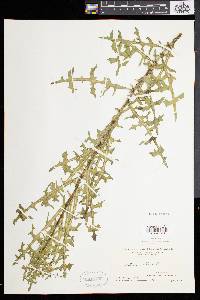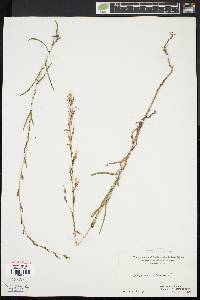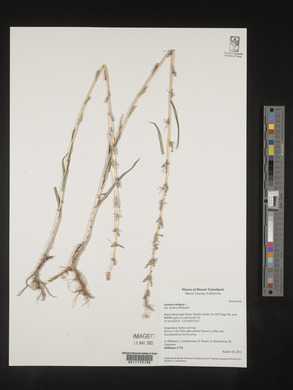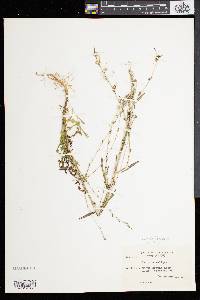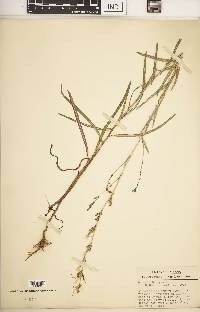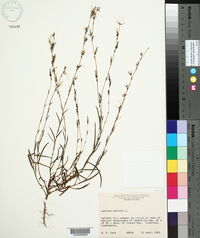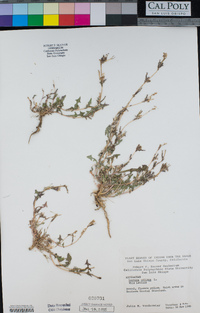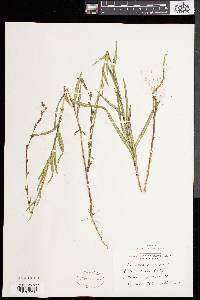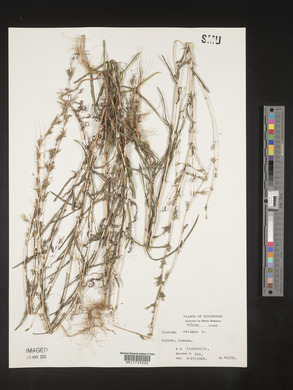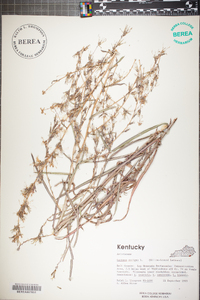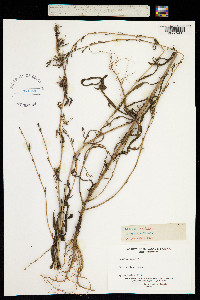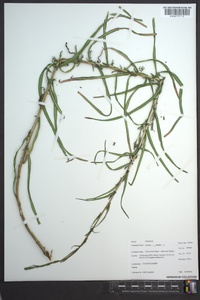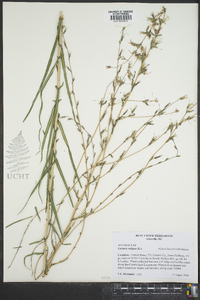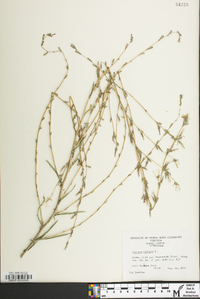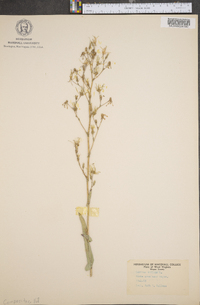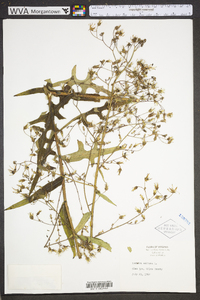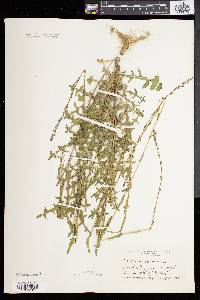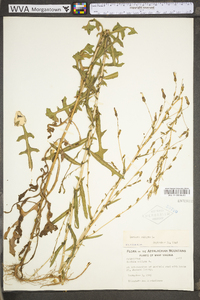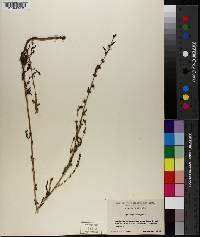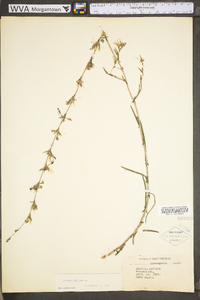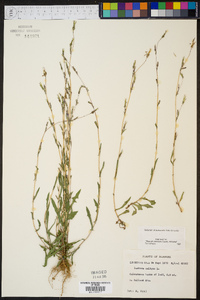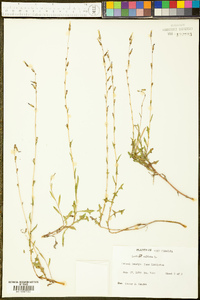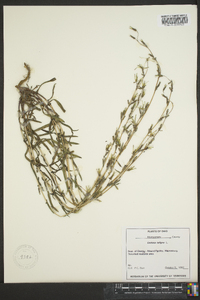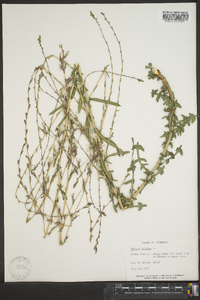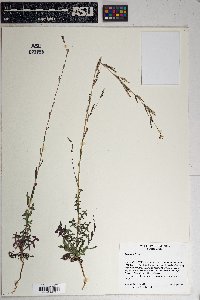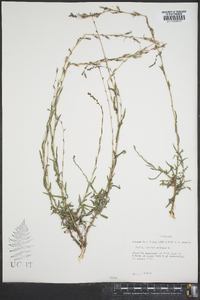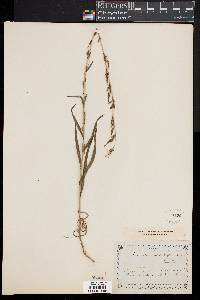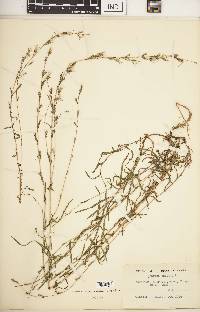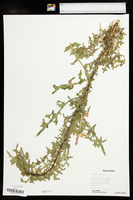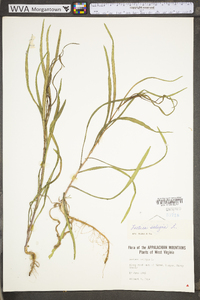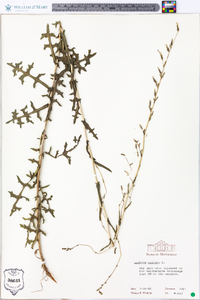Lactuca saligna
|
|
|
|
Family: Asteraceae
Willow-Leaf Lettuce, more...willowleaf lettuce
[Lactuca saligna f. ruppiana (Wallr.) Hegi, moreLactuca saligna var. runcinata Gren. & Godr.] |
Annuals (perhaps persisting), 15-70(-100+) cm. Leaves on proximal 1/2-3/4+ of each stem; blades of undivided cauline leaves ± linear to filiform, margins entire or denticulate, midribs usually prickly-setose. Heads in race-miform to spiciform arrays. Involucres 6-9(-13+) mm. Phyllaries usually erect in fruit. Florets 6-12(-20+); corollas yellow (sometimes abaxially bluish), usually deliquescent. Cypselae: bodies pale brown, ± flattened, elliptic to oblanceolate, 2.5-3.5 mm, beaks ± filiform, (2-)5-6 mm, faces 5-7-nerved; pappi white, 5-6 mm. 2n = 18. Flowering Aug-Oct. Disturbed sites; 10-1500 m; introduced; Ont., Que.; Ala., Ariz., Ark., Calif., Del., D.C., Ga., Ill., Ind., Iowa, Kans., Ky., La., Maine, Md., Mass., Mich., Mo., Nebr., Nev., N.J., N.Mex., N.Y., N.C., Ohio, Okla., Oreg., Pa., S.C., Tenn., Tex., Va., Wash., W.Va., Wis.; Europe; introduced also in Mexico. FNA 2006, McDougall 1973 Duration: Annual Nativity: Non-Native Lifeform: Forb/Herb General: Herbaceous annuals to biennials, glabrous, to 70 cm tall, stems slender, leafy, usually several arising from a taproot, decumbent at the base, with milky sap. Leaves: Alternate, linear-lanceolate, to 5 cm long, pale green, attenuate at the tips, bases arrowhead-shaped and clasping at the base, margins entire or the lower ones toothed or few-lobed, the midribs usually prickly-setose. Flowers: Heads small, ligulate, ligules yellow but sometimes bluish below, involucres cylindrical, 12-15 mm high, phyllaries overlapping in 2 or more series, usually erect in fruit, the heads in groups of 8-10, borne in narrow, spike-like panicles with short, ascending branches. Fruits: Achenes light brown, to 3 mm long, strongly flattened, contracted into a beak 5-6 mm long with a disk at the apex. Pappus of copious, white, early deciduous capillary bristles, 5-6 mm long. Ecology: Found in disturbed areas from 0-5,000 ft (0-1524 m); flowering August. Distribution: Somewhat widespread, from Ontario and Quebec south to Georgia and Alabama, west to Texas, Arizona, and California, extending north to Washington. Notes: Good identifiers for this species are the spinulose, oblong to elliptic leaves and the panicles with open, spreading branches. Introduced. Ethnobotany: Unknown Etymology: Lactuca is Latin for milky sap, while saligna means resembling the willow. Synonyms: None Editor: LCrumbacher 2011 Leafy-stemmed annual or biennial, the stem glabrous, 3-10 dm, more slender than in no. 7 [Lactuca serriola L.]; lvs conspicuously sagittate, linear and entire or with scattered, narrow, sometimes slightly toothed lobes, 6-15 cm, the rachis (or the lf, when entire) 3-8 mm wide, glabrous or with a few prickles on the midrib beneath and sometimes minutely stellate marginally; heads numerous in a long infl; fls 8-16, light yellow, drying blue; invol 12-18 mm in fr; achenes as in no. 7 [Lactuca serriola L.], but avg slightly smaller and narrower, merely scabrous distally, the beak commonly twice as long as the body; 2n=18. A weed in waste places; native of Europe, now found here and there in our range. Aug., Sept. Gleason, Henry A. & Cronquist, Arthur J. 1991. Manual of vascular plants of northeastern United States and adjacent Canada. lxxv + 910 pp. ©The New York Botanical Garden. All rights reserved. Used by permission. From Flora of Indiana (1940) by Charles C. Deam Local but abundant where it is found. No doubt it has a wider distribution than our map indicates. It prefers a sandy soil and in such a habitat it is a common weed in ballast for miles along railroads. Found along railroads and roadsides and waste places and pastures. …… Indiana Coefficient of Conservatism: C = null, non-native Wetland Indicator Status: FACU |


